.




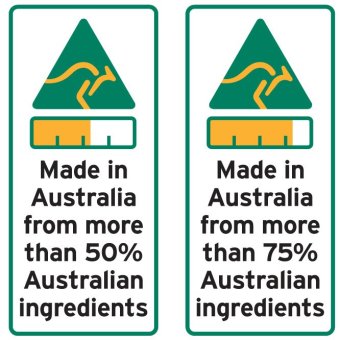
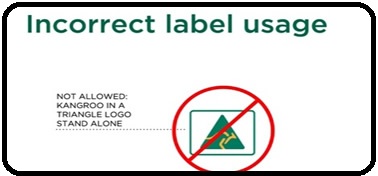
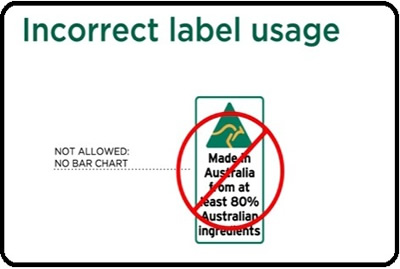
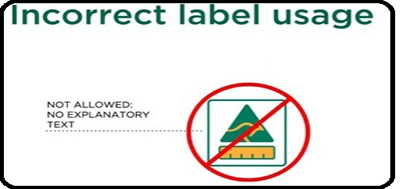
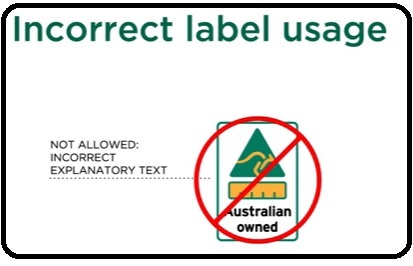
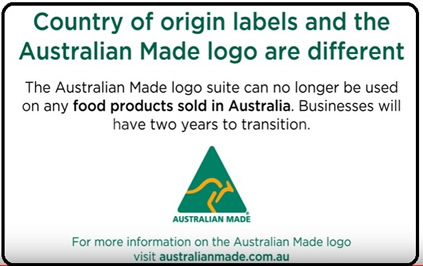
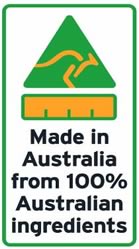
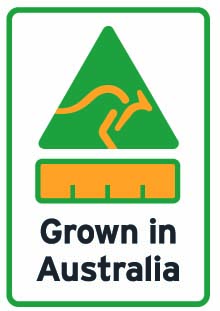
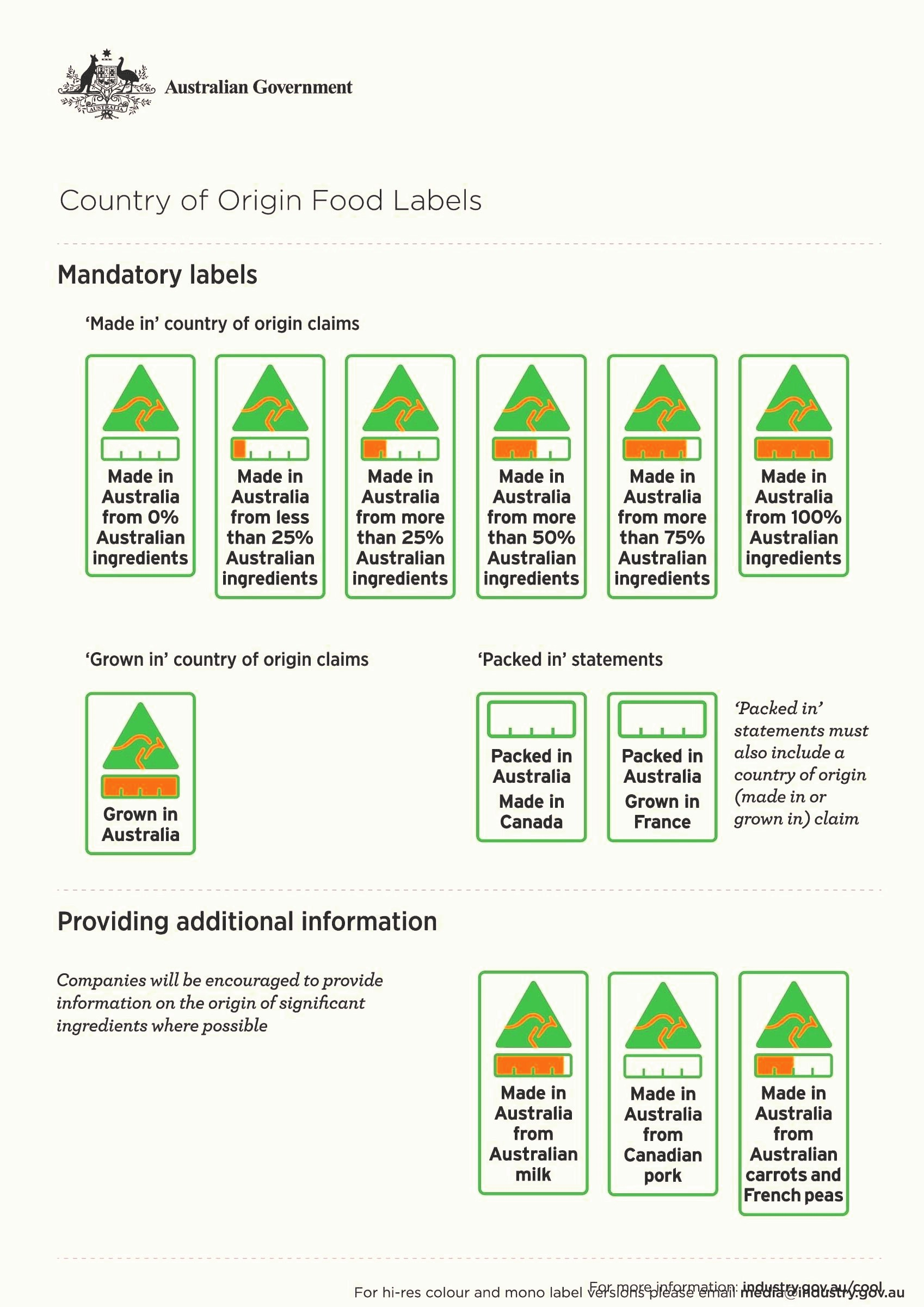
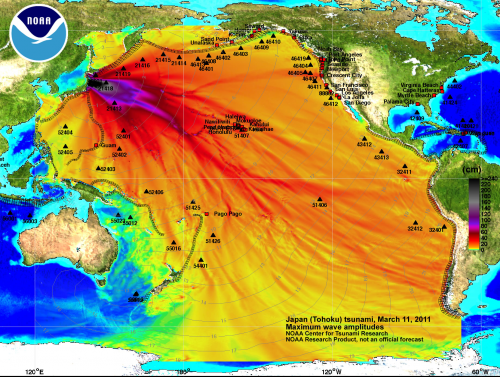


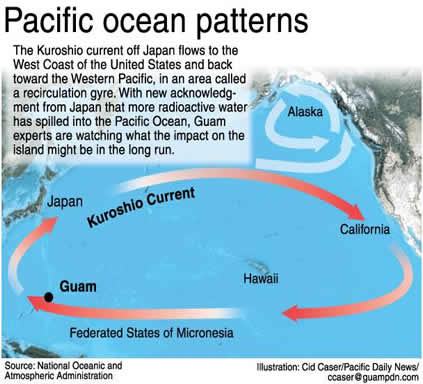
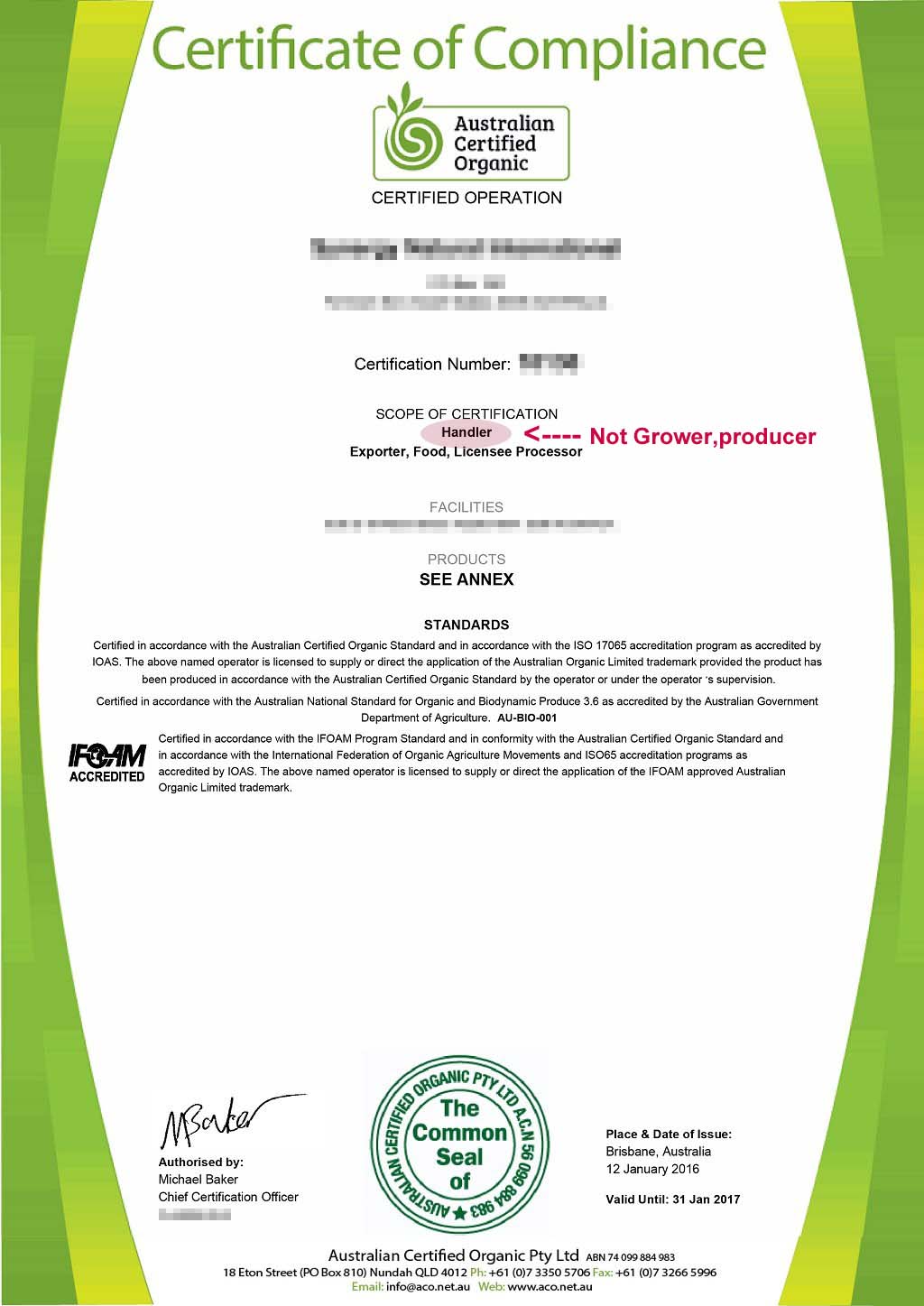
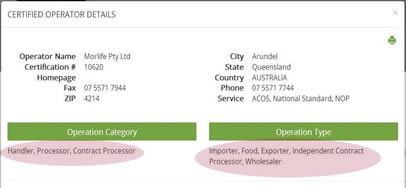
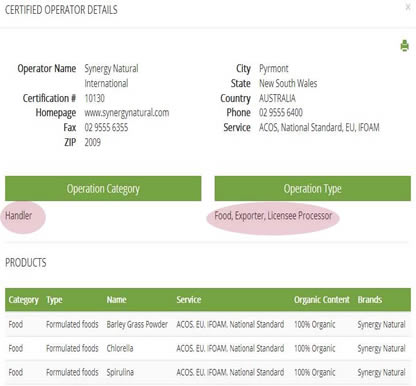
Blog
Australian Spirulina is the "Best Spirulina in the world"
Click to read more
Australian Spirulina, the world's the most pure Spirulina compared other 24 products around the world (inclusive of USA, UK, Canada, Japan, New Zealand, and India).
Naif Abdullah Al-Dhabi, from King Saud University, carried out a research
- "Heavy metal analysis in commercial Spirulina products for human consumption"
This study reveals the concentrations of six typical heavy metals/minerals ( Nickel , Zinc , Mercury , Platinum , Magnesium , and Manganese ) in 25 Spirulina products commercialized worldwide. The result shows that Australian Spirulina (TAAU Australia) is superior to the rest in terms of purity. The report was published on Saudi Journal of Biological Sciences on Oct 2013:

List of Spirulina products and their country of origin

12 samples from USA, 1 from Japan, 3 from UK, 1 from India, 5 from Canada. You may ask Why is TAAU the only sample from Australia? because TAAU is the ONLY Spirulina grower in Australia. Other products simply claim to be Australian made. (simply importers, some called Handler as they are described on Ambiguous Australian Ceritified Organic Certificate) While other Australian Brands rave about their Spirulina product being "Australian made" or "Australian Certified Organic" But they never admit their Spirulina is not even grown in Australia. Their Spirulina is 100% imported from other countries.
Heavy metal concentration in Spirulina samples

Ni : Nickel
- The lowest was S1 ( TAAU) at 0.211 mg/kg, highest was S2 at 4.672 mg/kg. it's more than 22 times higher than our product. other samples ranged between 1.618 mg/kg (S21) to 3.577 mg/kg(S8), about 7.6 times to 17 times higher than our sample.
Zn : Zinc
- Our sample S1 was lowest at 0.533 mg/kg, highest at 6.225 mg/kg (S6), which is about 12 times higher than ours. Other samples ranged between 1.478 mg/kg (S21) to 5.627 mg/kg (S2), about 2.8 times to 10.6 times higher than our sample.
Hg : Mercury
- Again, sample S1 was lowest 0.002 mg/kg, highest is 0.028 mg/kg (S2), 14 times higher than our S1 sample. Other samples ranged between 0.016 mg/Kg (S18) to 0.026 mg/Kg. (S14) aboout 8 times to 13 times higher than our S1 sample.
Pt : Platinum
- TAAU sample S1 was at 0.001 mg/kg, highest was 0.012 mg/kg (S8). 12 times higher than our sample. Other samples ranged between 0.006 mg/kg (S21) to 0.011 mg/kg ( S4,S7,S9), about 6 times to 11 times higher than our S1 sample.
Mg : Magnesium
- No doubt, our S1 was the lowest at 0.002 mg/kg , highest was 0.042 mg/kg (S14), 21 times higher than our sample S1. Others samples ranged between 0.014 mg/kg (S5) to 0.036 mg/kg(S19) about 7 times to 18 times higher than Ours.
Mn : Manganese
- TAAU Sample S1 was at 0.076 mg/kg, highest was 2.248 mg/kg (S19). almost 30 times higher than Our S1 sample. Others between 0.006 mg/kg (S25) to 1.777 mg/kg (S16).
Graphical effect of heavy metal concentration

At Australian Spirulina, we pride ourselves in our quality. From this journal article, it is evident that our Spirulina is of the finest quality in the world. While other Spirulina companies promote how great their products are and that they are "Certified Organic", they never state where the Spirulina is grown. It is also important to note that 3 samples were reported from the UK. As we understand, Spirulina cannot grow in the UK due to the colder climate and therefore must import the products from other more tropical countries (most likely from China, India, Thailand, etc).
Canada, Japan, New Zealand are also not suitable for Spirulina production due to their low temperatures and weather. There is no doubt that these products are imported from other counties. Spirulina requires tropical weather and a pollution free environment, which ensures it's purity and sustainability.
Not all Spirulina manufactured are of the same quality. Budget options are available but are of lower quality from China and India, flooding the market. These products are often masked and labelled in other countries as their own during packaging (such as Made in USA, United Kindom, Australia, or New Zealand, etc). Often customers are not aware that some countries do not produce Spirulina at all. Good quality Spirulina is never cheap. Being aware of how your Spirulina is grown and where it comes from is more important than chasing "Organic" certificates.
New Food labelling Law
A new country of origin food labelling system commenced under the Australian Consumer Law
Click to read more
When does the Standard come into effect?
The Country of Origin Food Labelling Information Standard(Standard) commenced on 1 July 2016. The Standard establishes a new system for the country of origin labelling of food products sold in Australia. Businesses have up to two years to transition to the labelling requirements set out in the Standard. During the transition period, businesses may either:
- Voluntarily adopt the requirements of the Standard or
- Continue to comply with the requirements around country of origin labelling set out in the Food Standards Code
From 1 July 2018, businesses must comply with the Standard's country of origin labelling requirements.
So, this means you can't expect exactly the same effect through oral consumption of Spirulina. However, some Spirulina companies provide misleading medical claims in this regard. They try hard to promote Spirulina from a medical standpoint, which we don't feel is right.

5 Typical incorrect usages:

Kangaroo logo stand along

No bar chart

No explanatory text

Not allowed to use "Australian Own"

No longer used for food products sold in Australia
According to the new system, Australian Spirulina will be the only Spirulina product eligible to use both "made in Australia from 100% Australian ingredints" and "100% Grown in Australia" logos.


Details for new labelling system:

"Product of Australia"
As the highest claim for real Australian products, Australian Spirulina will keep on using "Product of Australia" on our labels.
GMP issue
Be careful with company who claims that their products are manufactured by GMP standards
Click to read more
GMP is good manufacture practice. In Australia , the GMP system is applied only to medicines and some cosmetic products. It has nothing to do with food products. So if a company claims that their products are manufactured by GMP standards, you have to be careful about their products. We know that no other Spirulina products in Australia have been listed or registered with TGA (Therapeutic Goods Administration) as medicine or therapeutic goods yet!
The only system for food products is HACCP. However, this is for ordinary food. It is not concerned with Spirulina products.
Organic issue
Production of Spirulina requires a large amount of Sodium Bicarbonate (baking soda). There are two reasons for this:
Click to read more
One is maintaining pH levels in growing water in order to avoid wild Algae growth with Spirulina in ponds (not all algae are good for human consumption and some wild algae are even toxic). The other one is Spirulina requires a high pH level environment to grow. Spirulina cannot grow well in low pH levels.
No companies can grow Spirulina commercially without using a large amount of Sodium Bicarbonate. This basically means that no one can claim their products as "fully organic" products.
Some consumers may say "how can other companies claim their products as organic products?". The answer is simple: most of them are certified by private organizations. There is no governmental certificate which endorses it!
For example, some countries don't even produce Spirulina by themselves (like New Zealand ) but they can have Organic Certification in their country: How is this possible and who can audit it if it operates in other countries?
According to Australian organic related regulations, no Spirulina products are eligible to be claimed as organic products. That is why consumers cannot find any Spirulina products which have been certified as Organic in Australia. In the Australian market, most certified Spirulina comes from USA or New Zealand . The question is "Is it right to use another country's certificate in Australia ? Is it the same as our certification system?"
The answer is clear. For example, if someone from another country tries to enter our country without an Australian Visa (Certified in Autstralia), can they use a New Zealand or USA VISA to ask for entry into Australia (Market)?
Another example: if someone who owns a Solicitor or Dentist License issued by another country, can they work in Australia without an Australian license? The answer is clear!
Why don't they want to apply for an Australian Organic certificate? The answer is "It is not possible". There is no certificate issued by a Governmental Organisation in Australia . Our company is the only company producing Spirulina according to Australian regulations. If it is not possible for us to get an Organic certificate, who else can?
Easy Ways to Compare Spirulina
A few easy steps may help you determine whether your Spirulina is good or not.
Click to read more
Buy a product from a company you know. The company should have a local contact number or service.
- Buying a product with a good brand name to give you more confidence in what you are purchasing. You will have more protection when anything goes wrong. No local contact details means no guarantees at all.
Label that provides only little information; don't buy it!
- If a producer provides little information then how can you determine that its products are reliable?
Too good a price : don't buy!
- There is no company that can produce Spirulina cheaper than others, unless their Spirulina is not pure. Otherwise, they source and use the Spirulina from some other countries which don't have strict regulations for human consumption. It might be impure, have high levels of bacterial contamination and a higher content of heavy metals.
Check product's colour (powder or tablet)
- The colour of pure and fresh Spirulina should remain dark and green. If a product comes with some tiny spots or dull colour, these are not good products. ( click here to learn how to compare)
Smell and taste Spirulina products ( tablet or powder)
- Spirulina comes with a natural sea weed smell. It's normal. But if a product contains other wild algae, it will have a different smell. Taste some spirulina (powder or tablets). If it tastes too sweet, sour or strange, then It is not good Spirulina.
Moisture
- Good quality Spirulina should retain a softness like fresh flour and has low levels of moisture. If it is already wet or sticky as dough, please discard it immediately.
Japan Fukushima Nuclear Disaster
Will this impact on Australia?
Click to read more
On 11 March 2011, the Japan earthquake struck approximately 72 km east of the Oshika Peninsula, Japan. At magnitude 9.0, this was the largest earthquake recorded in Japan since records began. The earthquake triggered a tsunami with an estimated height of 14 m at the Fukushima Dai-Ichi site that in less than an hour.
The tsunami resulting 6 m high sea defenses, disabling the shared reactor heat exchangers and diesel generators and breaking the connection to the power grid. With external assistance hindered by flooding, debris and earthquake damage, these serious events led to overheating of the reactors. In the hours and days that followed several hydrogen explosions occurred and the reactor cores of Units 1, 2 and 3 experienced significant to full meltdown.
Fukushima continues to leak hundreds tons of radioactive water into the Pacific Ocean every day. It will continue to do so indefinitely as the source of the leak cannot be sealed as it is inaccessible to both humans and robots due to extremely high temperatures.
ARPANSA (Australian Radiation Protection and Nuclear Safety Agentcy ) has assessed that the health impact for people living in Australia from the Fukushima Dai-ichi nuclear power plant (NPP) accident is negligible.
Will radiation from Japan reach Australian waters?
It has been estimated that it will take about 5 years (from March 2011) for radioactive materials released to the ocean at Fukushima to reach the north coast of Western Australia, and about 10 to 15 years to reach the east coast of Queensland. By the time it arrives in Australian waters it is expected that the radioactive material will have been diluted to such low levels that they will be difficult to detect.
ARPANSA investigated Contamination of the ocean and atmosphere based on the results of international atmospheric and ocean modelling and daily air monitoring at five locations in Australia.
ARPANSA results and conclusions
No radioactive caesium or iodine from the Fukushima Dai-ichi NPP accident was detected at Australian air monitoring stations. Very low levels of radioactive xenon ( 133 Xe) were detected in Darwin during April 2011, which were assessed to have no impact on the health of any person living in Australia.
No food samples tested by ARPANSA exceeded internationally accepted limits . Some foods had very low levels of contamination. These were targeted for continued testing to ensure the safety of Australian consumers (testing discontinued in 2014).
ARPANSA results and conclusions Link
Rumors
You may have found lots of website rave about water pollution from Fukushima, most of them quoted a chart source from US NOAA ( National Oceanic and Atmospheric Administration). The chart below indicates the Tsunami's affected area, and height of the tsunami wave. not for pacific ocean contamination. Even if this rumour is true, our Darwin growing facility will remain unaffected.
NOAA Tsunami chart (not water contamination char)

Contamination water & fallout
It took just over two years for the radioactive plume from Fukushima, Japan, to travel via ocean currents and reach the shores of North America, researchers say.

Source: Bedford Institute of Oceanography
A radiation plume from the March, 2011 nuclear accident in Fukushima, Japan took about 2.1 years to travel via ocean currents and ultimately cross the waters of the Pacific Ocean to reach the shores of North America. That's according to to a study published at the end of 2014 (December 29) by the Proceedings of the National Academy of Sciences.


As the Kuroshio current runs clockwise from Japan --> California -->Hawaii --> Guam --> Japan. This region may have accumlated high radiation pollution in the long term. Products from these regions may need take extra care.
Spirulina powder VS tablets
Spirulina powder & tablets which one is better?
Powder form Spirulina is quick to digest in our body. Most Spirulina manufacturers add a large amount of binder (or tablet agent) in order to keep tablets nice and firm while they are making tablets. Binder (Filler) is not digested easily in our body. Binder added Spirulina tablets will take much longer to start to break down in our stomach. It is not healthy and not good for our body.
What is a binder? The most common binder is "Silica diocide", in plain English you can call it "clay". Imagine how you would feel if you paid a high price for clay to eat! (not Spirulina only). To resolve this problem, our company has developed a new tableting technique for our pure Australian Spirulina tablets. We use no binder or filler to produce Spirulina tablets. What we do is we increase the pressing pressure and lower the pressing speed to make tablet nice and firm. Now Australian Spirulina is the only company which is able to produce 100 % pure Spirulina tablets without binder or filler. We are very proud of it. Australian Spirulina tablets are the only Spirulina products without any additive.
Binder free is obviously best for Spirulina consumers. However, the binder free process will lower the production capacity, meaning the cost of production is higher. That is another reason why the price of Australian Spirulina is higher than other brands.Most other brands put 10~20 % of binder in tablets, so they can make tablets quicker and cheaper. Consumers may already discover that Spirulina powder of some brands is even higher than the same weight of tablets: Why? Because they put a lot of binder or other foreign ingredients in their tablets, so their tablets are cheaper than powder.
In fact, we normally lose 5 % of powder during the process and pressing powder into tablets and don't forget labour and operating costs. So the cost of Spirulina tablets will be 30~40 % percent higher than the same weight of powder. Clearly the wise consumers now understand why some brands can sell their tablets cheaper than their powder which requires no further processing If you find some brands' powder is more expensive than their tablet, they are telling you their tablets are not pure. Would you buy this kind of product once you know this?
Australian Spirulina uses only 100% pure Australian Grown Spirulina as a single ingredient. What you pay is just for Spirulina , not for binder ! Australian spirulina promotes Green concept, we don't over package our products.
Click to read more
Altenative ways to use Spirulina
What can I make from Spirulina
Click to read more
For best results , We strongly suggest customers consume Spirulina directly only with water
We fully understand that new users or children do not always find it easy to take spirulina powder for the first time. If you or your family members have trouble with the natural seaweed taste and smell of Spirulina, this section may provide some useful solutions.
The following alternative ways of consuming Spirulina give you a choice. However, it should be noted that when mixed with other foods you may experience a reduced effectiveness in some of the good enzymes and vitamins found in Spirulina. Although, this is still much better than not taking Spirulina or even taking other food supplements. Of course the best way is to take Spirulina directly with a glass of water. As this minimises the loss of nutritional value of our product. What we are offering is simply a choice in how you take your Spirulina.
Spirulina for Beauty
Spirulina is the wonder anti-ageing “living food”. For our busy life styles today, the following is an easy way of nourishing and treating your skin inside and out. On a daily basis whenever you prepare your raw fruit juices or fruit smoothies, add one teaspoon of Spirulina powder to start off with. Before enjoying your anti-ageing healthy tonic drink, take out a couple of tablespoons and apply to your face. For best results leave on for 15-20 minutes. Then rinse off and tone and moisturise for a healthy glowing skin. What a great way to start each day. Continue the treatment for three weeks and notice the difference in how you feel and look. You don’t have to believe this, you will know it.
Spirulina Kitchen Cosmetics
Be adventurous when feeding your skin, it is just like your body that needs variety. You will find the food that works best for you, because every one’s skin is unique.
Normal Skin/Combination
Internal
Increase these foods into your diet, brewer’s yeast, bran, carrots, sprouts, green and red peppers, goats milk, Kefir, Kombucha, oatmeal, oranges, lemons, pumpkin, parsley, whole grain bread and cereal, rose hips, water cress. Add olive oil to your diet and increase purified water and herbal teas to daily diet. Add Spirulina as a living natural vitamin and mineral food supplement.
External
Foods: Almond meal, apple cider vinegar, bran, brewer’s yeast, butter milk, cream, egg, Kefir, Kombucha, honey, kelp, oatmeal, sour cream, Spirulina, wheat germ.
Fruit and vegetables: Apricots, avocado, banana, papaya, peach, pear, melons, carrot, celery, cucumber, lettuce, potato. Herbs: Aloe-vera, borage, clover, calendula, comfrey root, dandelion, elder flower, fennel, lavender, lemon grass, mint, nettle, rosemary, violet.
Essential oils: Carrot seed, camomile, frankincense, geranium, jasmine, lavender, neroli, orange, patchouli, palma rosa, rose, rosewood, sandalwood, ylang ylang.
Infused oils: Borage, calendula, carrot, evening primrose, rose hip.
Cold pressed oils: Almond, apricot, avocado, grape seed, jojoba, olive, Soya bean, sesame, sunflower, safflower, wheat germ.
Be creative, for your skin changes every day so change your formulas. Experiment with the different foods and oils as mentioned above for your skin. What you need is time and patience; keep a record of all your trials and errors.
Spirulina Recipes
Spirulina with fruit juice
You probably want to begin with a teaspoonful of Spirulina powder mixed with fruit juice in a blender or with an electric mixer. Apple, pineapple or papaya works the best. You canincrease the amount of Spirulina powder to suit your taste and your personal health program.
Spirulina smoothie
Half a cup of yoghurt, one cup soy milk or cup of fruit juice (apple, orange or pineapple). One or more of the following: 1 papaya, 1 peach, 1 mango, half a cup of boysenberries or raspberries, 1 teaspoon Spirulina powder.Blend all ingredients.
Another Spirulina smoothie
1 ripe papaya, 1/4 teaspoon cinnamon, 1 teaspoon Spirulina powder, juice of 1 lime. Blend all ingredients.
Spirulina Salsa
Simply add a teaspoon of Spirulina powder to a bowl of salsa. The Spirulina enhances the taste and gives the salsa an interesting colour and a nice texture.
Guacamole
2 avocados, Cayenne pepper, Fresh lime juice to taste, 2 medium tomatoes, 2 cloves crushed garlic, salt to taste, 1 teaspoon Spirulina, 2 tablespoons salsa (optional), 1 tablespoon finely chopped onion (optional). Mash avocados. Add all other ingredients and blend well. Spirulina gives guacamole a beautiful colour.
Avocado dip
1 avocado, Paprika to taste, 1 tablespoon sour cream, Tamari or soy sauce to taste, 1 teaspoon Spirulina. Mash all ingredients together.
Cream dip
4 tablespoons sour cream or non- fat yoghurt, juice of 1 lemon, 3 teaspoons tamari or soy sauce, 1 teaspoon Spirulina. Mix all ingredients together.
Another cream dip
4 tablespoons sour cream or non- fat yoghurt, 1/2 teaspoon garam marsala and 1/4 teaspoon cumin or 3/4 teaspoon curry powder. Small glove of garlic, 3 teaspoons tamari or soy sauce 1 teaspoon spirulina. Mix all ingredients together.
Tofu salad
8 ounces firm tofu, 1 bell pepper (green or red), 2 medium tomatoes, 1 medium 8 ounces firm tofu, 1 bell pepper (green or red), 2 medium tomatoes, 1 medium 8 ounces firm tofu, 1 bell pepper (green or red), 2 medium tomatoes, 1 medium pepper sauce or cayenne pepper (to taste), 1 heaped teaspoon Spirulina. Mix all ingredients together. Almost any combination of raw vegetables can be put into a tofu salad.
Pesto (pasta sauce)
1 packed cup fresh basil leaves, 3 - 5 tablespoons virgin olive oil, 2 tablespoons parmesan cheese, 3 cloves garlic, 2 teaspoons Spirulina, Pinch of salt, 2 ounces pine parmesan cheese, 3 cloves garlic, 2 teaspoons Spirulina, Pinch of salt, 2 ounces pine
Rice topping
3 tablespoons shoyu (or soy sauce), 1 tablespoon roasted sesame seeds Dried bonito (optional), 1 teaspoon Spirulina. Combine ingredients and serve over rice.
Spirulina Pate
Juice of half lemon, 1 teaspoon shoyu (or soy sauce), 1 tablespoon olive oil, 1 clove crushed garlic, 1 teaspoon Spirulina. Mix the Spirulina with the garlic. Add the lemon juice and shoyu, and mix well with a fork. Stir in the olive oil. Serve on toast or crackers with slices of tomato and onion (optional).
Popcorn
Grated parmesan cheese, 1/2 tablespoon dulse flakes (or other seaweed), garlic powder to taste, cayenne pepper, chilli pepper or paprika, 1 tablespoon Spirulina. Make popcorn as usual. Mix together any or all of the above ingredients. While popcorn is still warm, add seasoning mixture and shake vigorously so that the popcorn is evenly coated.
All recipes from "Spirulina - Micro Food Macro blessing" fourth ed. by Harald W. Tietze This article is reproduced with a permission.
Personalized Formulas
Cleanser
Natural yoghurt 250 g, honey 5g, Spirulina powder 3g, essential oils 0.25 ml. Mix ingredients together. Apply twice daily onto moist skin and massage gently, then rinse well with water.
Toner
Cider vinegar 10 ml, Spirulina powder 2g, rain water 80 ml, essential oils 0.25 ml. Mix ingredients together. Shake well before each use; apply twice daily as a splash on toner after cleansing.
>Moisturiser
Apricot Oil 30 ml, grape seed oil 25 ml, vitamin E 1 drop, essential oils 0.25 ml, Spirulina powder 1g. Mix ingredients together. Shake well before using for Spirulina powder sediments will separate. Use 5-10 drops massage oil into the skin twice a day after toner.
Mask
Oatmeal (fine) 60 g, corn starch 40 g, Spirulina powder 3g, essential Oils 0.25 ml. Mix ingredients together and add water until a soft paste. Apply with a soft pastry brush. Avoid contact with the eyes. Leave mask on for 10 minutes. Rinse with warm water, following with a toner and moisturising oil. Use once a week.
Fresh fruit facial
Avocado 1/2, pure honey 1 tsp, Spirulina powder 3g, fresh cream 1 tsp. Mix ingredients together and apply to well cleansed skin. Lie down and relax with fresh cucumbers on the eyes. Leave for 15 to 20 minutes. Rinse with warm water, then with cool water following with toner and moisturising oil.
Hair care Recipes
Spirulina is rich in protein which is what the hair needs to be fed with internally and externally to maintain healthy, shiny and sleek hair.
Protein suds-less Shampoo
Shampoo will cleanse and nourish the hair. without stripping the natural oil out of your hair. Can be used for all hair types. Whole egg (depending on hair length) 1 or 2, milk 3 tbsps, Spirulina powder 1 1/2g (1/2 tsp.), lavender essential oil 3 drops. Whisk the ingredients together until thoroughly blended. Wet hair and use as normal shampoo. Rinse off thoroughly, adding 1 tablespoon of cider vinegar or Kombucha to the final litre of rinsing water.
Body building shampoo
Shampoo enhances body and shine, and rejuvenates the hair follicles. Shampoo ¼ cup, filtered water ¼ cup, fresh avocado 1/2. Combine all ingredients into a blender, and blend until smooth. Wet hair and apply shampoo, gradually adding warm water and working into a lather. Rinse thoroughly until the hair is clean. Then use hair conditioner, and add 3 drops of lavender essential oils, then rinse thoroughly.
Protein Hair Pack
This conditioning hair pack is suitable for dry or for chemically treated hair. Whole egg 1, olive oil 25 ml, natural yoghurt 150 ml, pure honey 2g, Spirulina powder 2g, sandalwood essential oil 10 drops. Whisk the ingredients together until thoroughly blended. Apply to dry hair and cover with a plastic shower cap, then wrap in a warm towel and leave on for 20 minutes. Apply shampoo directly onto the treatment then rinse. Reapply shampoo and rinse off thoroughly, adding 1 tablespoon of cider vinegar or Kombucha to the final rinse water.
Hair loss pack
This hair pack is rich in vitamin E, protein, lecithin and essential fatty acids. It feeds the follicles with nutrients required for healthy hair growth. Avocado oil 2 tbsp, wheat germ oil 1 tbsp, whole egg 1, Spirulina powder 11/2 g, rosemary essential oil 5 drops. Mix all the ingredients together. Massage thoroughly and gently into the scalp, put on a shower cap, and wrap the head in a hot towel and leave on for 20 minutes. Apply shampoo directly onto the treatment then rinse with warm water. As the hair pack is highly emollient it may need to be shampooed twice. Use Spirulina shampoo for it is gentle and stimulates growth. Spirulina Bath Treat Pampered and treat yourself to a nourishing luxurious aromatic bath. Evoke a vision of Cleopatra lolling seductively in her swan-shaped tub.
Nourishing milk Bath
Spirulina powder 1-2 tsps, fresh milk 1-2 cups, sandalwood essential oil 5 drops
Soothing Oatmeal Bath
Oatmeal fine ½ cup, Spirulina powder 1-2 tsps, lavender essential oil 5 drops, warm water 2 cups.
Moisturising Oil Bath
Olive oil 1 tbsp, sesame seed oil ½ tbsp, Spirulina powder 1-2 tsps, geranium essential oil 5 drops.
Reviving Salt Bath
Epsom salts ½ cup, sea salt ¼ cup, Spirulina Powder 1-2 tsps, pine essential oil 5 drops
Refreshing Vinegar Bath
Apple cider vinegar, 1 cup or Kombucha vinegar, Spirulina powder 1-2 tsps, lemon essential oil 5 drops. For the above bath treats, place all ingredients into a blender, whisk until blended. Fill the bath before adding mixture. Swish to combine, then luxuriate for at least 15 minutes while your body is being nourished.
Aromatic Herbal Bath
Lavender dried herbs 1 tbsp, rose petals 1 tbsp, geranium 1 tbsp, boiling water 1 litre, Spirulina powder 1-2 tsps Pure boiling water on to dried herbs, cover and allow to steep for 3 hours. Strain and cool then add Spirulina and blend before adding to the bath water. N.B Increase Spirulina powder in any of the above bath recipes to your body’s desire.
Benefits from Spirulina
What exact benefits can I get from Spirulina?
Click to read more
Richest nutrient source
- Spirulina is the richest nutrient and complete food source found in the world. It contains over 100 nutrients, more than any other plant, grain or herb. Today Spirulina is widely used as a food supplement to maintain health, boost energy and reduce weight.
- Spirulina contains 60-63 % protein, up to 13 % of essence minerals like Calcium, Magnesium, Potassium, Phosphorus, Iron, and Zinc as well as complete vitamin B groups and many important anti-oxidants (which protect cells). The anti-oxidant Phycocyanin can only be found in Spirulina. It is the richest natural source of Vitamin E and beta-carotene.
Energy booster
- Spirulina being naturally green is beneficial to our health as it contains a large amount of the chlorophyll and Phycocyanin. Chlorophyll absorbs the energy from sunlight to create carbohydrates to boost your energy through the day.
Vegetarians best nutrient supplement
- Vegetarians can not eat animal products and commonly lack Vitamin 12 (from the animal liver), Iron (from red meat or spinach) and Amino Acids. Spirulina is a natural organic product and vegetarians taking Spirulina daily will fill these gaps.
Concentrated of protein and essential fatty acid
- Amino Acids are important to our body. They assist muscle growth, immunity, and the production of enzymes and hormones. Spirulina can provide more than 60~63 percent of protein including a complete source of 8 essential amino acids, plus 10 other non-essential amino acids, which are commonly lacking in vegetarian diets. Spirulina is also one of the few sources of food that contains omega 3 and 6 fatty acids in the linolenin, gamma linolenin acid(GLA). These fatty acids are essential in keeping a woman's body healthy.
Weight reduction
- Although Spirulina can not directly reduce your weight, it contains the nutrients our bodies need and is quickly assimilated.
Adjust your body's PH value
- The ideal healthy human body's PH level should remain on low alkaline about PH 7.35~7.45. Modern day people indulge in too much acidic food like soft drinks, meat, cheese, eggs, and ham. These cause our body to become acidic ( PH < 7 ). Many medical research reports have proven that acidic bodies will have more chance of getting diseases or cancer. Regular use of Spirulina can help keep your body alkaline will help you reduce this risk and is the ideal food supplement for the weight reducer.
Ideal supplement food for the pregnant women and infant
- While women are pregnant, the baby in their body will rapidly absorb nutrients. If the pregnant mum does not get sufficient nutrients from food while her baby is growing, she will become depleted of these nutrients herself. Spirulina easily provides the richest and most complete source of nutrients for the pregnant women and thereby prevents nutrient deficiency after the baby is born.
Natural Nutrient source
- Most multi vitamin products are synthetic (artificial). No other products can provide natural nutrients and vitamins like Spirulina. Spirulina is a totally natural non synthetic product
No More Organic Spirulina
Click to read more
Since October 2005, most "Organic Spirulina" was from USA. Two major USA companies have both ceased production of "Organic Spirulina", due to the USA Department of Agriculture terminating the use of a fertiliser which was orginally permitted as an organic feed for the growth of Spirulina.
Both two companies have expressed that the new regulation is not safe for production of "Organic Spirulina" , which may have compromised the safety of their product. Now only China and India are claiming their Spirulina is "Certified Organic". Consumers can find these Spirulina products in the market place.
Our company Australian Spirulina has never claimed our Spirulina is ‘Organically Grown’ as we believe in being honest to all of our customers. Time has established what we insisted from day one, that none of the Spirulina companies can claim it’s a fully organic product, as it is not possible to produce fully organic Spirulina to a high quality.
Why can China, Taiwan, India claim that their product is organic? Do these countries have a better technique than USA or Australia? The answer of course is NO!, the difference is the certifiying system. So, if a consumer is still purchasing "Certified Organic Spirulina" , then you are most likely choosing an inorganic source grown from China or India. Since October 2005 the USA have ceased production of "Organic Spirulina", more than 3 years have passed and the shelf life of ‘Organic Grown Spirulina’ should have lapsed by 2008.
If you, the consumer wish to know where your Spirulina source is coming from, please contact your current supplier to find out more. Spirulina products which claim they are ‘Made in Australia’ or ‘Made in New Zealand’ doesn’t mean they are grown in Australia or New zealand. It only indicates that the product has been packaged in Australia or New Zealand only.
Recently, customers may found some Spirulina products that claimed they are "Australian Certified Organic", pretending their product are "Grown in Australia". In fact, these products use 100% imported Spirulina. It's hard to believe 100% imported Spirulina can receive the "Australian Certified Organic" label, It's strange. And we do not know How? and Why?
Customer should be aware, most of Certified Organic group are private. none official or owned by the Government. We sugguest customers should check where their Spirulina is sourced from.
ACCC's say about Organic claims
Click to read more
What is an organic claim?
- An organic claim is any claim that describes a product as organic, or the ingredients used to make a product as organic. For example "100% organic", "made using organic ingredients" or "certified organic". Products labelled as organic generally attract a premium price compared to those produced using artificial fertiliser, chemicals or pesticides and non-essential food additives or processing aids. Businesses that make organic claims must be able to substantiate those claims.
Organic product standards
- There is a voluntary Australian standard for growers and manufacturers wishing to label their products "organic" and "biodynamic" (AS 6000–2009). This standard is a useful reference point when determining whether a product is organic.
"Certified" products
- Many products carry a symbol, logo or other trade mark to show that they are certified organic. This certification is provided by various private bodies and the minimum standards required to receive certification may vary. A business that labels its product as certified organic must ensure that its product is actually certified. All organic claims, whether they reference a standard or not, should be able to be substantiated. If a business claims to meet a particular standard, it must ensure that this claim is true.
Weird "Australian Certified Organic"
Ambiguous "Australian Certified Organic" Spirulina?
Click to read more
You must think an "Australian Certified Organic product" must be a product home grown and produced in Australia right? If you say yes, you may disappointed! Production in Australia is NOT required. Are you aware Spirulina with 100% imported ingredients can also receive Australian Certified Organic certificate? It doesn't make sense, but this is really happening in our country.
Customers may have found some Australian branded Spirulina claim their products are Certified Organic by "Australian Certified Organic Organization" (ACO). ACO is a private organization (Non-Government) registered in Brisbane QLD who issue Organic Certicates to applicants.
In our opinion, for a product to be labelled as an "Australian Certified Organic" product it should be grown/produced in Australia. This should be the minimum requirement to apply for this label. Unfortunately this is not necessarily the case. If imported product include an "Overseas Organic Certificate", then they can apply through ACO to be recognised as an "Australian Certifiled Organic" product.
What ACO (Australian Certifiled Organic) said:
- An organic claim is any claim that describes a product as organic, or the ingredients used to make a product as organic. For example "100% organic", "made using organic ingredients" or "certified organic". Products labelled as organic generally attract a premium price compared to those produced using artificial fertiliser, chemicals or pesticides and non-essential food additives or processing aids. Businesses that make organic claims must be able to substantiate those claims.
Organic product standards
- "Under Section 8 "Imported product" of National Standard for Organic and Bio-Dynamic Produce, ACO may recognise the status of imported products or ingredients. Certified operations will need to check with ACO for compliance of any imported products" (Australia Certified Organic, 2018).

As you can see, the scope of certification noted on the certificate is "Handler", not grower or producer. "Handler", meaning to buy, process (or packed) and then sell products only. This includes products that are entirely imported from other countries, and than packaged in Australia.
If you are searching on the ACO website, you will find 2 Spirulina companies registered as "Certified Organic". Below are some screen captures of "Organic" Spirulina companies registered with ACO found on their website. The Operation Category and Type is highlighted in red illustrating the certifcate registers the company as "Handler" or "Processor", rather than "Grower" or "Producer" at all.
Example A:

Example A:

You may be wondering How can they be registered as Australian Certified Organic just by buying and selling imported products?" The whole concept does not make any sense but this is true. Don't ask us why or how, as we cannot answer this. This question should be directed to the companies as to how their Audit process approves a product from outside of this country. Many people indulge and chase after products which claim to be "Organic", and are willing to pay more for authentic organic products.
In fact, consumer's good will has often been misused by some of companies and people, while consumers pay the price for a Australian Certified product. We believe that it is difficult to for people to comprehend and accept "100% imported Australian Certified Organic products". If you value authentic Australian grown products and agree that consumers should be made aware of the above, then you can help to make a voice by advocating to ACO or ACCC (Australian Competition & Consumer Commission).
Medical Benefit claimed
Many medical researchers have shown Spirulina actually can help in fighting some illnesses.
Click to read more
Many medical researchers have shown Spirulina actually can help in fighting some illnesses. In some cases Spirulina can even be used to fight Viruses and cancer etc. (please see our reference for related reports).
However, taking Spirulina orally doesn't mean you can have 100% the same result as researchers reported with respect to the medical applications of Spirulina. Consumers must understand that experts extract substances from Spirulina for medical applications. After the extraction and further processing, it can be injected or applied to humans in medical trials.
So, this means you can't expect exactly the same effect through oral consumption of Spirulina. However, some Spirulina companies provide misleading medical claims in this regard. They try hard to promote Spirulina from a medical standpoint, which we don't feel is right.
New labeling system
A new labeling system commenced from Nov 2005.
Click to read more